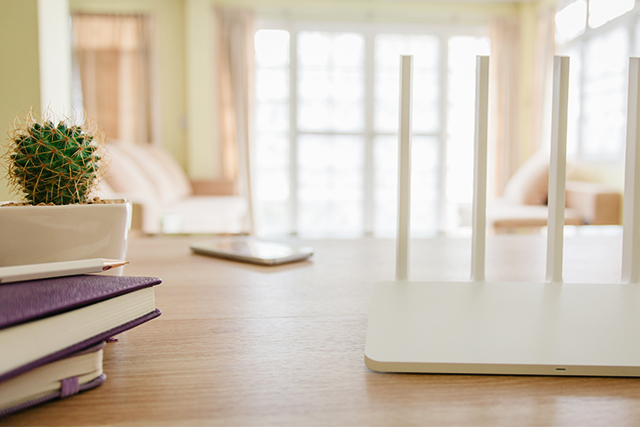Your Home Guide To Faster Wi-Fi

Why is my connection SO slow?
We all have asked ourselves this question at least once. If waiting for hours for your YouTube video to load, or if the idea of finishing your popcorn before Netflix even loads don’t seem so tempting then you may need to think about working on improving your Wi-Fi speed.
Speed depends on many factors and is not limited to what your ISP (Internet Service Provider) offers you.
It is true that the plan you select is one of the biggest factors and you should make sure to select a broadband package that suits your needs:
- What kind of user you are (i.e. will you be using it for browsing, on-demand TV, gaming, etc.?)
- How many devices will be connected
- The size of the coverage area
ISP’s have a multitude of flexible packages to help you chose the right one for you.
However and contrary to the general misconceptions, not all connection problems are due to the broadband and ISP selections you made. The quality of your Wi-Fi also depends on your hardware of choice, how you set it up and your router’s location.
And this is where your (undiscovered yet) IT talents can come in handy. Here are some tips to help you increase your Wi-Fi speed with no professional interference.
Start by identifying the source of the problem
First things first! Always start with a proper evaluation of the problem to assess whether it is indeed an ISP Package issue or a technical issue.
To do that you need to evaluate the actual speed of your internet in each room by using one of them any available simple tests available online. Now, this could sound difficult but in reality, it is not! A lot of websites and tools are available to help you with this, for our article we will be using Speedtest.net.
The process can be summarized in these few steps:
- Test the speed through cable
- Plugging your internet cable directly to the DU/Etisalat router rather than Wi-Fi
- Connect directly to the ISP network
- Go to speedtest.net
- Test your speed
- Disconnect from Cable
- Test the speed through Wi-Fi
- Connect to your Wi-Fi
- Go to speedtest.net
- Test your speed
- Repeat test in various locations at home
- Repeat the test in every room in your house to also evaluate coverage through Wi-Fi
Now that you have tested and identified the problem’s source you can move to the next step.
Follow these guidelines to increase/maximize your Wi-Fi speed
- Strategic router placement:
First, there’s the obvious: Get closer to your box or your router. The closer you are to the modem, the higher the power of the signal is. But staying within a 2m perimeter of your modem is neither possible nor practical.
And, yes we know, routers are not the trendiest home accessory you have but it’s still not an excuse to keep them in a cabinet or closed TV table as walls, doors, and metal objects can block your signal. To maximize your signal’s strength by relocating it, keep in mind to place it at the center of the house and in an open area to increase coverage.
Avoid placing it next to a wall, a door, a piece of furniture, in the corner of a room or next to a metal object that will most likely block the propagation of waves.
- Upgrade or update your router
The new generation of routers is worth investing in. The Dual Band allows you to use both 5 GHz and 2.4 GHz frequencies so you can benefit from transferring data on both at the same time.
If you don’t plan an upgrade, you can begin with an update. A simple google search on your router’s model will help you determine and update your firmware to make sure you are getting the best performance out of it.
- Use cabled access points vs. repeaters and extenders
Repeaters and extenders do increase your Wi-Fi coverage but not your available bandwidth. You could experience network interruptions or slowdowns when moving around your house or when you have many connected devices.
By installing access points in your home, you will increase your internet speed and coverage and with a unified configuration, your devices will connect seamlessly from one room to another, from an access point to another with no latency.
- And last but not least the forever-effective: restart/reboot your router every now and then!
If despite all these efforts, your internet is still slow or keeps on disconnecting then you may request an in-depth analysis of your Wi-Fi network from an IT Expert. Don’t hesitate to contact Geeks! We are only a few clicks away!
